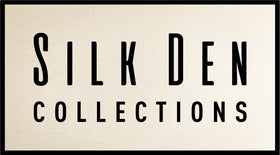What is Japanese shibori silk?

Shibori is a Japanese dye technique. It is a traditional method of creating patterns on fabric through a variety of manual resist-dyeing techniques. Here are the key aspects of shibori:
1. Binding: Sections of the fabric are tightly bound with thread, rubber bands, or other materials. This prevents the dye from reaching those areas, creating patterns.
2. Folding and Pleating: The fabric can be folded, pleated, and then bound to create intricate designs. Different folding methods yield different patterns.
3. Stitching: Some shibori techniques involve stitching patterns into the fabric, pulling the threads tight to gather the cloth, and then dyeing it. After dyeing, the threads are removed, revealing the design.
4. Clamping: Objects like wooden blocks can be clamped onto the fabric to create geometric patterns. This method is known as itajime shibori.
5. Dyeing Process: The fabric is typically dyed in indigo, but other natural or synthetic dyes can be used. The bound areas resist the dye, resulting in patterns when the fabric is unbound.
6. Unbinding: After dyeing, the bindings are removed to reveal the resist patterns. The contrast between the dyed and undyed areas creates the distinctive shibori look.
Types of Shibori:
• Kanoko Shibori: Similar to tie-dye, involving binding with thread.
• Miura Shibori: Loop binding without knots.
• Kumo Shibori: Pleating and binding to create spiderweb-like patterns.
• Arashi Shibori: Fabric is wrapped around a pole and bound, then dyed to create diagonal patterns.
• Itajime Shibori: Folding and clamping with shapes to create geometric patterns.
Shibori is valued for its unpredictability and the unique, handcrafted quality it imparts to textiles. Each piece of shibori-dyed fabric is one-of-a-kind, reflecting the skill and creativity of the artisan.
